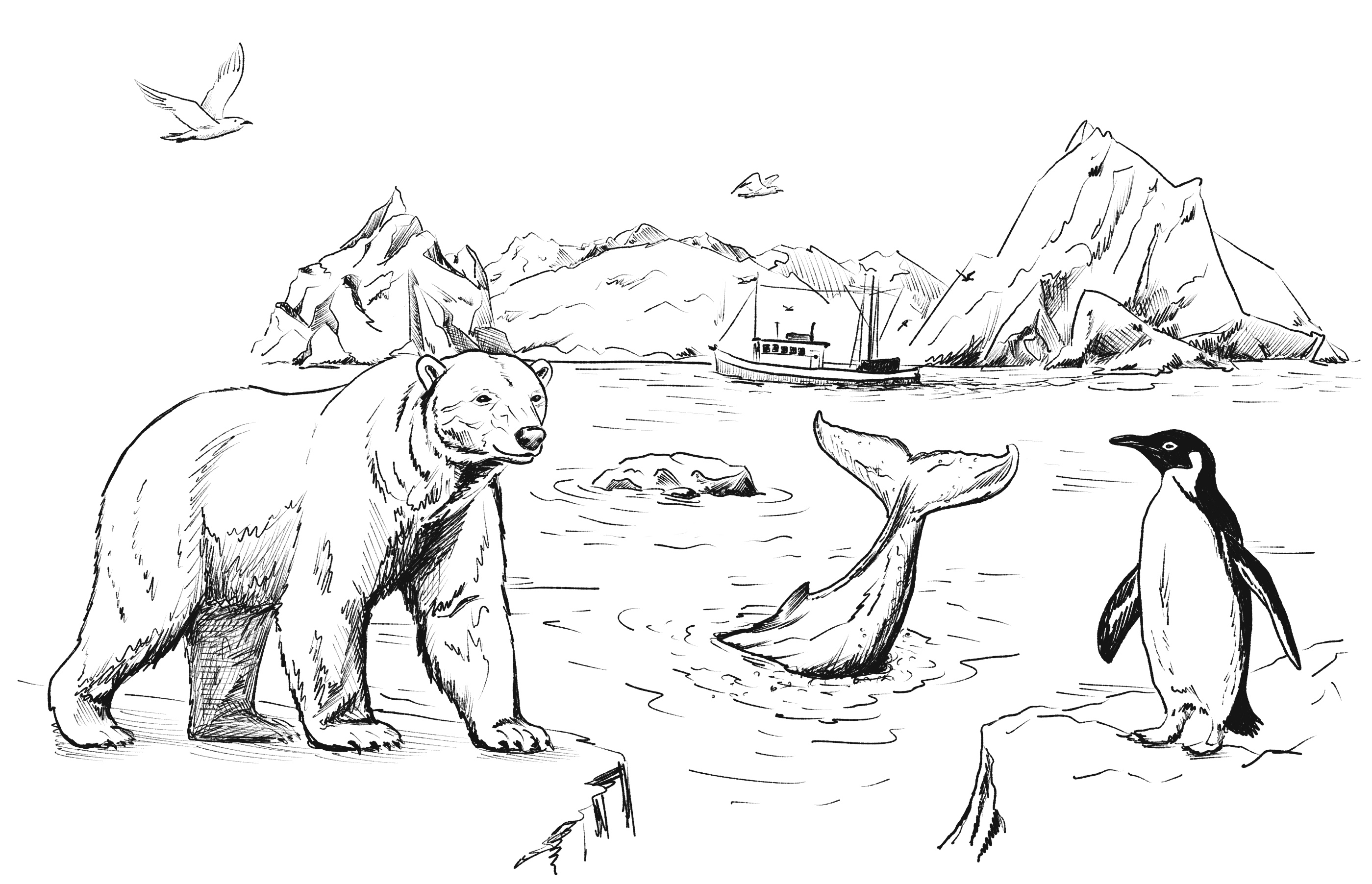
Visiting the Arctic
Breathtaking Landscapes: The Arctic is home to some of the most stunning and pristine landscapes on the planet, including vast ice fields, majestic glaciers, and dramatic fjords.
Unique Wildlife: The region offers the chance to see wildlife that is not found elsewhere, such as polar bears, Arctic foxes, walruses, seals, and various species of whales. Bird enthusiasts can also enjoy spotting seabirds like puffins and Arctic terns.
Northern Lights: The Arctic is one of the best places to witness the Aurora Borealis (Northern Lights), especially during the winter months when the nights are long and dark.
Cultural Experiences: The Arctic is home to indigenous peoples like the Inuit, Sami, and Nenets. Visiting the Arctic provides an opportunity to learn about their unique cultures, traditions, and history.
Adventure Opportunities: For those who love outdoor activities, the Arctic offers a range of options such as dog sledding, ice fishing, snowmobiling, kayaking, and hiking on glaciers.
Scientific Interest: The Arctic region is crucial for understanding climate change, as its environment is particularly sensitive to global temperature changes. Visiting the Arctic can offer insights into the region's ecological and environmental importance.
Isolation and Tranquility: The Arctic is one of the few remaining places where you can experience true isolation and tranquility, far from the hustle and bustle of modern life.
Midnight Sun: During the summer months, the Arctic experiences the phenomenon of the midnight sun, where the sun stays above the horizon for 24 hours a day. This offers a unique and surreal experience.
Bear in mind that visiting the Arctic requires careful planning due to its remote and challenging environment. It's important to travel responsibly and sustainably to minimize your impact on this fragile ecosystem.
1. Cruise Expeditions: Best for comfortable exploration, wildlife spotting, and remote access. Destinations include Svalbard (Norway) with polar bears, glaciers, and Arctic wilderness; Greenland with ice fjords, Inuit culture, and dramatic scenery; the Canadian Arctic with the Northwest Passage, beluga whales, and Inuit villages; and the Russian Arctic with Franz Josef Land and remote tundra (limited access due to geopolitical issues). The season for these expeditions is June–September (summer months for ice-free sailing), with companies like Hurtigruten, Quark Expeditions, Ponant, and Silversea offering trips.
2. Land-Based Tours: Best for immersive cultural experiences and longer stays. Destinations include Iceland in the Arctic Circle region (Akureyri, Grimsey Island); Northern Scandinavia in Finnish Lapland (Rovaniemi), Swedish Abisko, and Norway’s Tromsø; and Alaska (USA) in Utqiagvik (Barrow) and the Arctic National Wildlife Refuge. Activities include dog sledding, Northern Lights viewing, and experiencing Sami culture.
3. Icebreaker & Specialty Cruises: Best for unique experiences like reaching the North Pole. Options include North Pole voyages on Russia’s nuclear icebreakers (e.g., 50 Years of Victory) and the Northeast Passage (rare, along Russia’s Arctic coast). The season for these trips is June–July.
